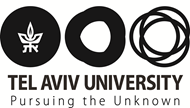Five steps to harness the three anchors to cultivate innovation
Below are five steps that will contribute to tightening the collaborations and connections between the corporate, research and community anchors, enabling the growth and prosperity of ecosystem.
1. Early evaluation and determination of clear goals
To understand the environmental needs and to plan how to incorporate stakeholders in realizing these goals, a review of the challenges and a dialogue with each of the three players, needs to be initiated to understand how the challenges meet their interests, abilities and constraints.
2. Build partnerships in a unified program
The creation of formal partnerships with corporate bodies, research institutions and community organizations, and their anchor in a strategic program that incorporates the interests and strengths of all anchors and reflects joint priorities, will contribute to strengthening each of them.
3. Implementation and execution
Take advantage of the strengths and interests of each anchor in the stages of application and execution:
1. Corporate anchor: The main power is in the development of new technologies and involvement in projects that emphasize corporate responsibility. Therefore, encourage corporate innovation with green technologies through incentives, grants or subsidies, and initiate joint projects that incorporate aspects of corporate responsibility.
2. Academia anchor: Its ability to combine scientific knowledge with environmental solutions and effectively translate research into environmental applications, requires you to build an environment for it that will allow it. To that end, invest in research programs in academic institutions that focus on environmental innovation, and set up centres that encourage cooperation between researchers, businesses and the community.
3. Community anchor: The main goal is to bring active community participation and take responsibility for environmental initiatives in the field. Collaboration with civil society organizations or prominent activists in the community is an effective step in the city's lead in decision -making and the implementation of the project. In addition, promoting understanding and involvement in the community through educational and awareness initiatives, can provide a stable and long -term support base on the part of the residents of environmental innovation projects in the city.
4. Monitoring, evaluation and adjustment
In order for the implementation of the program to bring about constant improvement and fit itself to changing challenges and opportunities, it is important to have regular estimates that follow the progress, effectiveness and adjustment of any activity for needs. Continuous feedback mechanisms among all anchors, which allow real -time adjustments, can contribute to you. These anchors will also improve the transparency of the moves with the various stakeholders.
5. Cultivating success to establish long-term moves
One of the ways to ensure that ecosystems of innovation will develop and prosper over time is through the development of long-term programs beyond the immediate projects. To do this, stick to success stories – the analysis of successful initiatives to serve as anchors for further expansion of the move and its establishment over time.
| < Previous | Next > |

